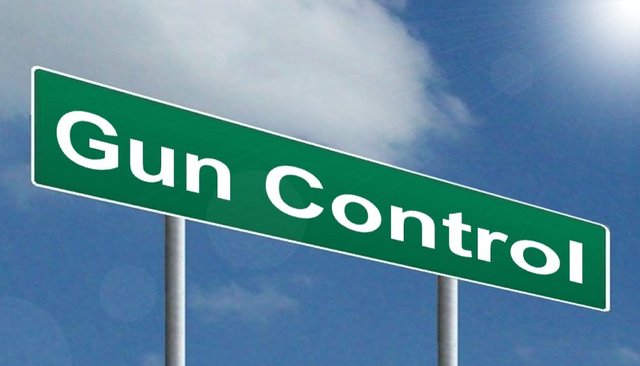Analysis for Correlation Between the Number of Gun Laws by State and Gun Related Mortality Rate

Source
Pre Evaluation Disclaimer
I have not yet done any analysis on this subject and would like to now state that my findings are not used to push any political agenda. I am purely looking for a correlation between the subjects at hand and since many may find the subject controversial I figured I would write this statement beforehand. I will gladly accept that the data I used for this evaluation was not the best that could be but due to the limited amount of data made easily accessible on the subject it is the best I can do. If any organization does do a complete study on this I would hope it is held to much higher standards and to a higher rigor. If you are skeptical of the outcome then please double check it and state your findings (with the math shown or at least linked to a google sheet). I hope you enjoy.
As a precursor to this, I would like to state my bias towards this subject. I personally have friends and family that go hunting and personally support one to have the right to do so. At the same time I also don't believe that the extremely simple accessibility to assault weapons found in certain states is too unrestrictive. I do not want this to seem like some form of biased mathematics towards gun control but was an honest experiment, for myself, to see what the math stated. I figured I would share my findings for anyone to see, criticize (with honest feedback), and possibly help improve the work. Another thing is that this project could be something that could be easily done by high school (secondary) students for a statistics project if they needed. The work of this was derived directly from my high school (secondary) statistics project for IB which was done to look for a correlation between GDP per capita and mean life expectancy of a country. Due to the heavy amount of data being used in this I have decided to restrict some to a semi public (anyone with link) google spreadsheet as there are a total of 392 (2*11*9+2*11*2+3*50) cells being used at minimum.
Limitations
Now there are limitations in this analysis as it does not look at the type of laws but only the number of laws. I did the analysis twice in 2 different formats to see if it was just by chance due to the limited number of data points.
The Hypotheses
- Null Hypothesis: Gun related mortality rates are not correlated with the number of gun laws.
- Alternative Hypothesis: Gun related mortality rates are correlated with the number of gun laws.
TL;DR
I rejected the null hypothesis accepting the alternative hypothesis with approximately a 0.10%-1.0% chance of there not being a correlation.
The Data
| State | Mortality Rate Per 100,000 | Number of Laws |
|---|---|---|
| Alabama | 19.6 | 10 |
| Arkansas | 16.9 | 10 |
| Alaska | 23.4 | 4 |
| Arizona | 13.8 | 11 |
| California | 7.7 | 106 |
| Colorado | 12.6 | 30 |
| Connecticut | 5.3 | 89 |
| Delaware | 12.1 | 40 |
| Florida | 12.0 | 21 |
| Georgia | 14.1 | 6 |
| Hawaii | 3.6 | 78 |
| Idaho | 14.7 | 4 |
| Illinois | 9.5 | 64 |
| Indiana | 12.7 | 12 |
| Iowa | 7.8 | 24 |
| Kansas | 11.4 | 7 |
| Kentucky | 15.2 | 7 |
| Louisiana | 20.4 | 12 |
| Maine | 9.8 | 12 |
| Mairyland | 11.9 | 64 |
| Massachusets | 3.0 | 100 |
| Michigan | 11.7 | 21 |
| Minnesota | 7.4 | 41 |
| Mississippi | 19.6 | 5 |
| Missouri | 18.1 | 6 |
| Montana | 19.2 | 4 |
| Nebraska | 8.9 | 22 |
| Nevada | 14.9 | 21 |
| New Hampshire | 8.9 | 9 |
| New Jersey | 5.4 | 74 |
| New Mexico | 18.6 | 10 |
| New York | 4.2 | 75 |
| North Carolina | 12.5 | 30 |
| North Dakota | 12.8 | 13 |
| Ohio | 11.9 | 16 |
| Oklahoma | 18 | 9 |
| Oregon | 11.4 | 35 |
| Pennsylvania | 11.4 | 36 |
| Rhode Island | 4.7 | 43 |
| South Carolina | 17.3 | 12 |
| South Dakota | 11.1 | 5 |
| Tennessee | 16.0 | 22 |
| Texas | 11.7 | 18 |
| Utah | 12.8 | 13 |
| Vermont | 9.6 | 6 |
| Virginia | 10.9 | 13 |
| Washington | 9.8 | 43 |
| West Virginia | 14.0 | 21 |
| Wisconsin | 10.4 | 23 |
| Wyoming | 19.6 | 9 |
Now for breaking down the data I had decided to do so by breaking it down into specific intervals. Number of gun laws was broken down into intervals of 11 in the first test and intervals of 55 in the second; mortality rate was broken into intervals of 2 in each except the first interval was 4. To save space going through the tables of calculating the expected values for each cells (11x9 and 11x2) and to save space I will show you one of the observed and expected output tables (the smaller one) and link to my spreadsheet containing both of the tables.

(Image is link)
| Degree of freedom | Chi Squared Value | 99% Critical Value | 5% Critical Value | 0.1% Critical Value |
|---|---|---|---|---|
| 10 | 26.49485931 | 2.558 | 18.307 | 29.588 |
| 80 | 118.4253565 | 53.540 | 101.879 | 124.839 |
Now for those that have not kept up to date with their statistics I will explain what these categories actually mean. The 99% critical value states that there is a 99% chance that the value, if correlated, will be above that value, same with the 5% and 0.1%. Now in statistics, for biology at least, we tend to look specifically at the 5% critical value and if it passes there we deem a correlation. As you can see, our chi squared value is greater than the 5% in both cases but not the 0.1%. Upon looking at the critical values further we can deduce that the p-value (critical value) would be somewhere between 1% and 0.1% for both tests meaning that there is, at most, a 1% chance that these two items are not correlated. For this reason I reject my null hypothesis and accept my alternative hypothesis.
Resources
Picture: www.picserver.org/g/gun-control.html
Critical Values: www.uam.es/personal_pdi/ciencias/anabz/Prest/Trabajos/Critical_Values_of_the_Chi-Squared_Distribution.pdf
Gun Related Mortality Rates: www.cdc.gov/nchs/pressroom/sosmap/firearm_mortality/firearm.htm
Gun Laws by State: www.inverse.com/article/37141-state-gun-law-maps
Continued for Verifacation: www.gunlawsbystate.com/
Google Spreadsheet: docs.google.com/spreadsheets/d/1FMZIzhpNjP1CK4phCIFyB89sMWua9UeO45tVM-1S0qE/edit?usp=sharing
Google Doc: docs.google.com/document/d/1ptZCiNzX6beD0Xxm2-wXRejTZ1ZGmmLqwtm_GYFH_Dc/edit?usp=sharing
For further reading on chi-squared test, look at the following sources:
- en.wikipedia.org/wiki/Chi-squared_test
- www.statisticshowto.com/probability-and-statistics/chi-square/
- stattrek.com/online-calculator/chi-square.aspx
- math.hws.edu/javamath/ryan/ChiSquare.html
- www.statisticshowto.com/expected-frequency/
- www.statisticshowto.com/how-to-find-a-critical-chi-square-value/
- www.khanacademy.org








I agree with your decision to reject the null hypothesis based on a spatial look at the data. I took your summary table and joined it to state shapefiles for the United States. Using a warm and cool color scheme, I plotted mortality and gun laws and put them in an animation for comparison. The result clearly confirms your final assessment. Nice work!
I must thank you @gra for your contribution to the post. The visualization you had provided is something I hadn't even thought of. I truly find it shows my final analysis better than my post does. So thank you for making the contribution you have!
Regards,
Kryzsec
I love the power of spatial visualization and enjoy applying it to different data sets! I am happy to contribute to your objective statistical analysis of this very polarizing issue and draw light to the inverse correlation between the number of gun laws and per capita gun mortality rates.
The visualization you applied here makes this dataset very quickly interpretable. Great addition to this post @gra.
Thanks!
If anyone is curious about my position on why I think someone should be deemed safe to handle a gun before they can buy a gun (completely opinionated and not factual so it was left out of original post) it is because if someone whom is mentally unstable cannot buy guns legally then they will go to illegal methods... Now those that sell weapons illegally for a profit make money on repeat business and not going to jail, selling weapons to someone whom is mentally unstable is definitely not repeat business and if caught they cannot be trusted to not rat you out so it really wouldn't be in the best interest for them to sell that person weapons either. Look, worst case scenario we reduce the number of mass shootings (as seen in Canada, UK, Australia) but murders with guns still exist and best case won't happen. Because of my bias (and love for the taste of game meat) I do not agree with prevention of any guns being sold but rather restrictions on guns and equipment (suppressors, high capacity magazines, etc) being sold to those with proper gun handling training, no violent criminal background, and no mental illness. I could write an entire novel outlining my disposition on the subject but that does not change the numbers present from this data.
Regards,
Kryzsec
I personally agree with your position here. The best way to limit gun violence is mental health treatment and limiting the ease of access of guns to unstable individuals.
Nice one brother it is good..
Keep it up
Thanks. I am glad you liked it
Nice one brother it is good.. Keep it up
@originalworks